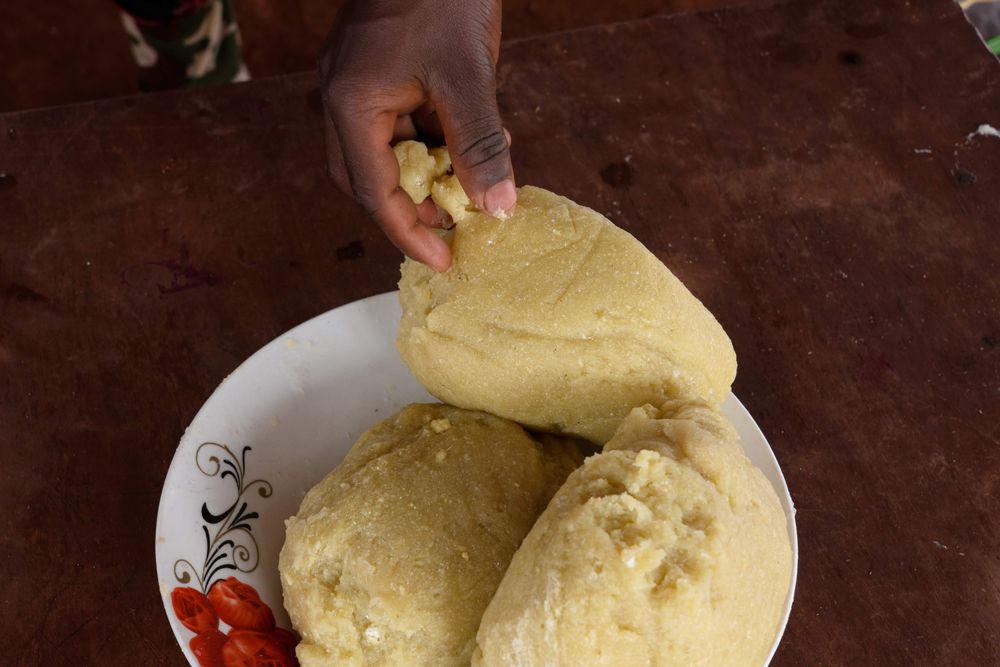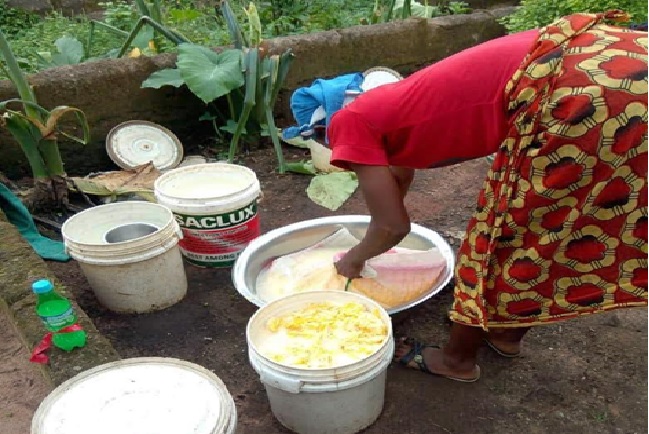Fufu
Product Identity
Fufu is a fermented soft cassava mash, with its processing varying from location to location, from processor to processor, and from batch to batch.
In general, fufu is made by steeping whole or cut peeled cassava roots in water to ferment for a maximum of three to four days. The time varies according to the ambient temperature (26°C-40°C).
Fermented grated mash or whole roots are sieved with water into a container and the sieved mash is allowed to sediment for about one hour. Finally, it is dewatered to a moisture content of around 50%.
The volume of water used during sieving depends on the form of the steeped roots (grated or whole roots). Sieving 30kg of fresh roots may be completed in about 33 minutes with 7.5l of water, while grated mash from the same amount of fresh cassava roots requires 3.4l of water for 10.25 minutes of sieving.
Dewatered mash is an intermediate form of fufu that is stored and sold as wet cake or dried flour. Cooked fufu is reconstituted paste that is moulded, cooked and pounded or stirred with a wooden spoon to produce cooked fufu dough.
During steeping, fermentation decreases the pH, softens the roots and helps to reduce potentially toxic cyanogenic compounds.
Fufu is indigenous among people in southern-western and eastern Nigeria and some parts of West Africa (Marai et al., 2016; Achi and Akomas).


